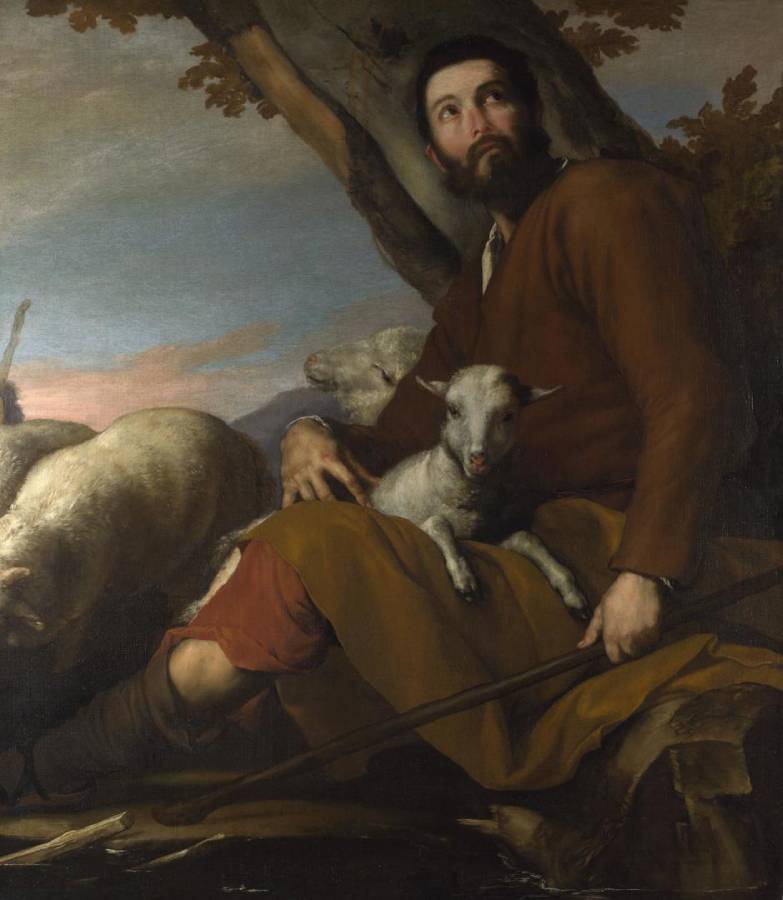Ribera, Jusepe de (1591-1652)
Giacobbe con il gregge di Labano (Jacob with the Flock of Laban)
1638
Oil on canvas, 132 x 118 cm
National Gallery, London
Jacob sits next to a stream, holding his shepherd’s staff, surrounded by his flock. Resting beneath a tree, he looks up towards heaven as if seeking guidance or strength. According to the story in the Old Testament, Jacob agreed to tend Laban’s flock for seven years so that he could marry his younger daughter Rachel. Laban tricked Jacob and gave him his eldest daughter Leah instead, forcing Jacob to work for another seven years in order to marry Rachel.
Instead of paying him wages, Laban promised Jacob he could keep any speckled lambs that were born from his flock. As told in Genesis 30: 37–38, Jacob peeled the bark off wooden branches and placed them in the stream (two are floating lower left). Any sheep that drank from this water would conceive speckled lambs, which Jacob was later able to claim as his own. A copy after this painting in the Cerralbo Museum, Madrid, reveals that our painting was substantially cut down on the left-hand side: the canvas was originally more rectangular in format and included a speckled sheep in the left foreground. In fact, it was not until the Cerralbo painting was found that the subject of our painting was identified – it had previously been thought to represent Christ as the Good Shepherd or Moses with the flock of Jethro on Mount Horeb.
Ribera signed our painting in the lower right corner, stating his Spanish nationality, his training at the Academy in Rome and the date 1638. It was not until the signature was uncovered during cleaning in the 1970s that Ribera’s authorship was confirmed – prior to that the painting had been ascribed to Murillo and had also been classified as being painted ‘in the style of Ribera’.
By 1638, when our picture was painted, Ribera had been living in Naples for over 20 years and was at the peak of his career – he had just completed an altarpiece for the Certosa di San Martino (1637) showing the Lamentation; a subject which he had already treated earlier in his career in The Lamentation over the Dead Christ. The Old Testament story of Jacob was evidently popular, for Ribera treated different episodes in Jacob’s life in the 1630s: these include an earlier version of Jacob with the Flock of Laban (1632, Escorial Palace), which is painted in a darker tonality overall and shows Jacob kneeling in a more rocky terrain; Isaac Blessing Jacob (1637, Prado, Madrid); and The Dream of Jacob (1639, Prado, Madrid).
Our painting is characteristic of Ribera’s mature style. Short delicate brushstrokes brilliantly describe details such as Jacob’s eyelashes and the sheep’s woolly coats, contrasting with the smooth handling of the folds in Jacob’s heavy garment and the broadly painted sky. Despite the light on the horizon, the foreground is quite dark, evoking Ribera’s interest in chiaroscuro ultimately derived from his predecessor Caravaggio. (NG)
